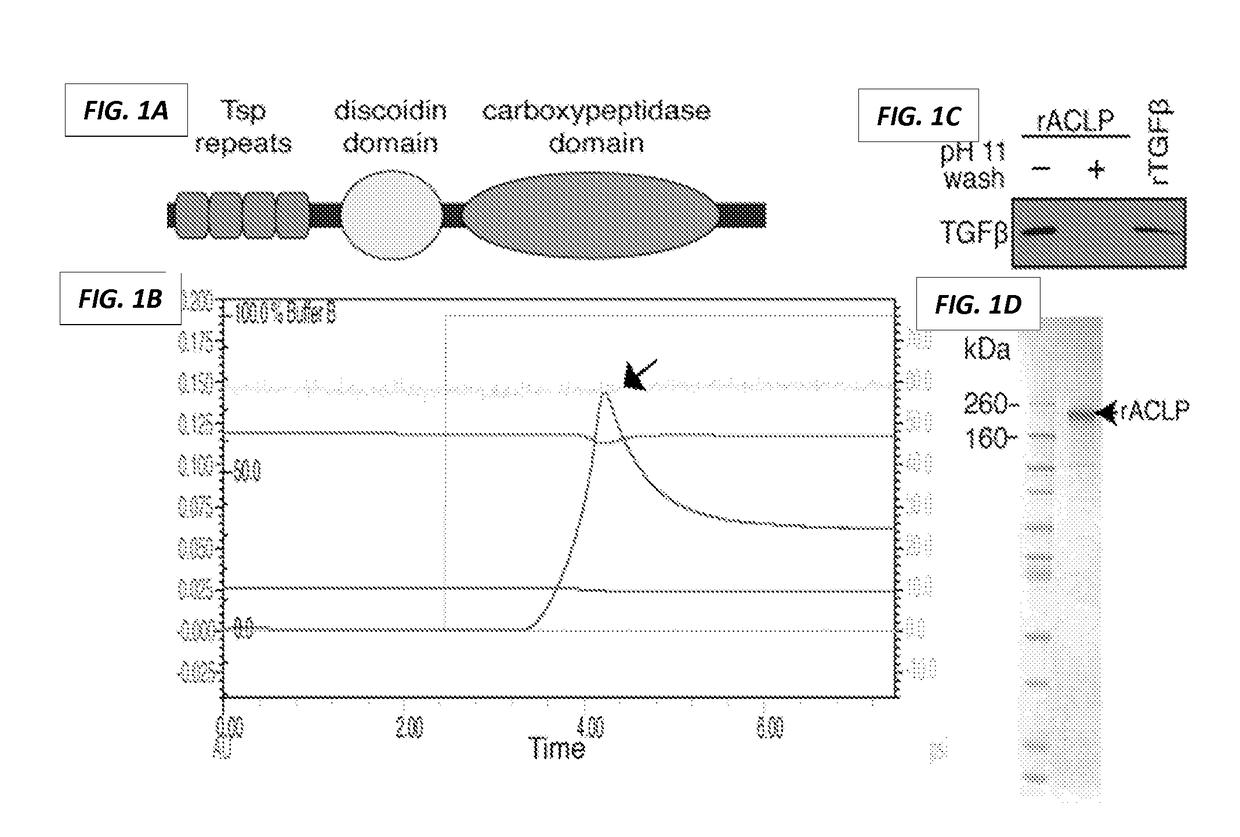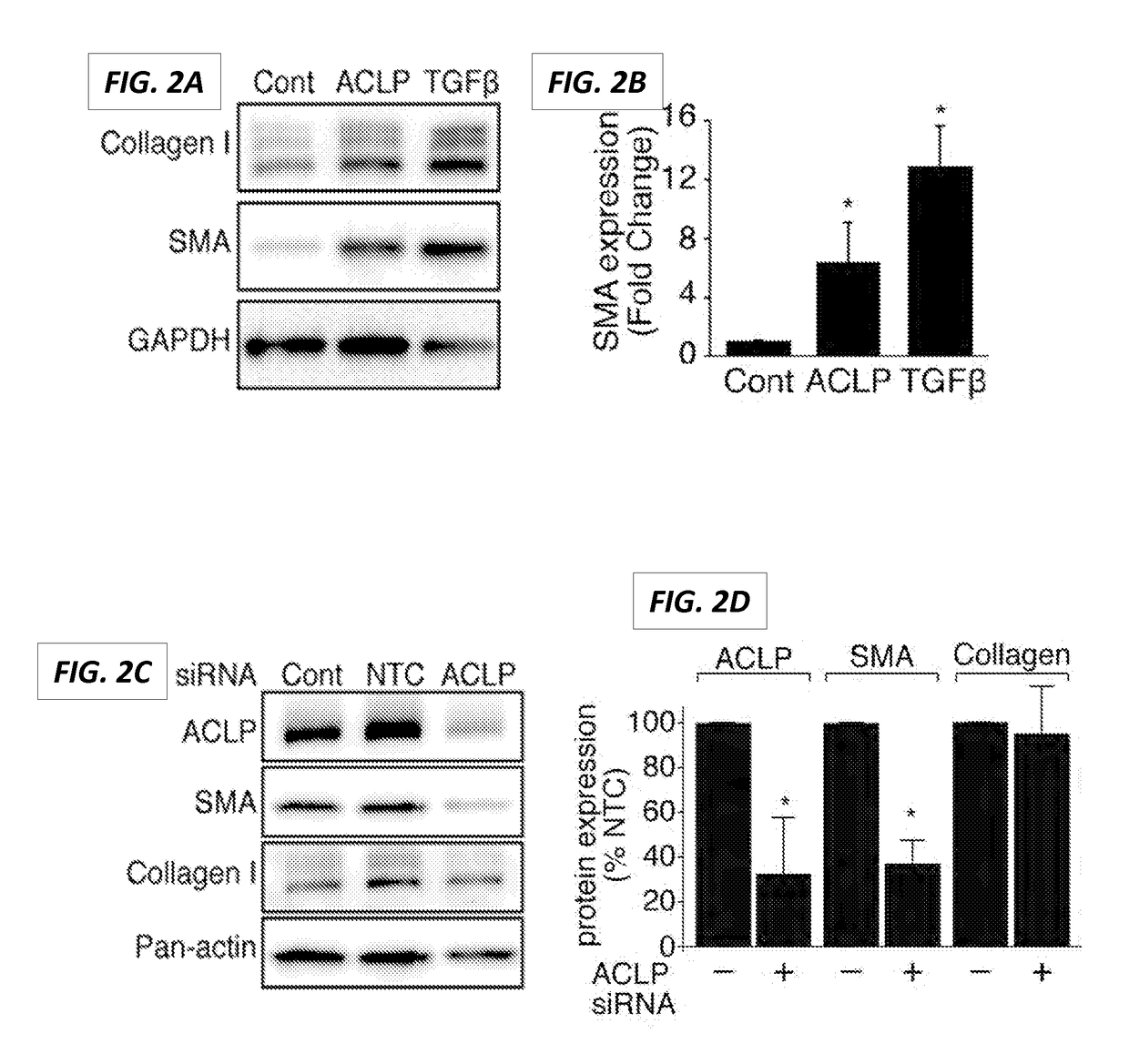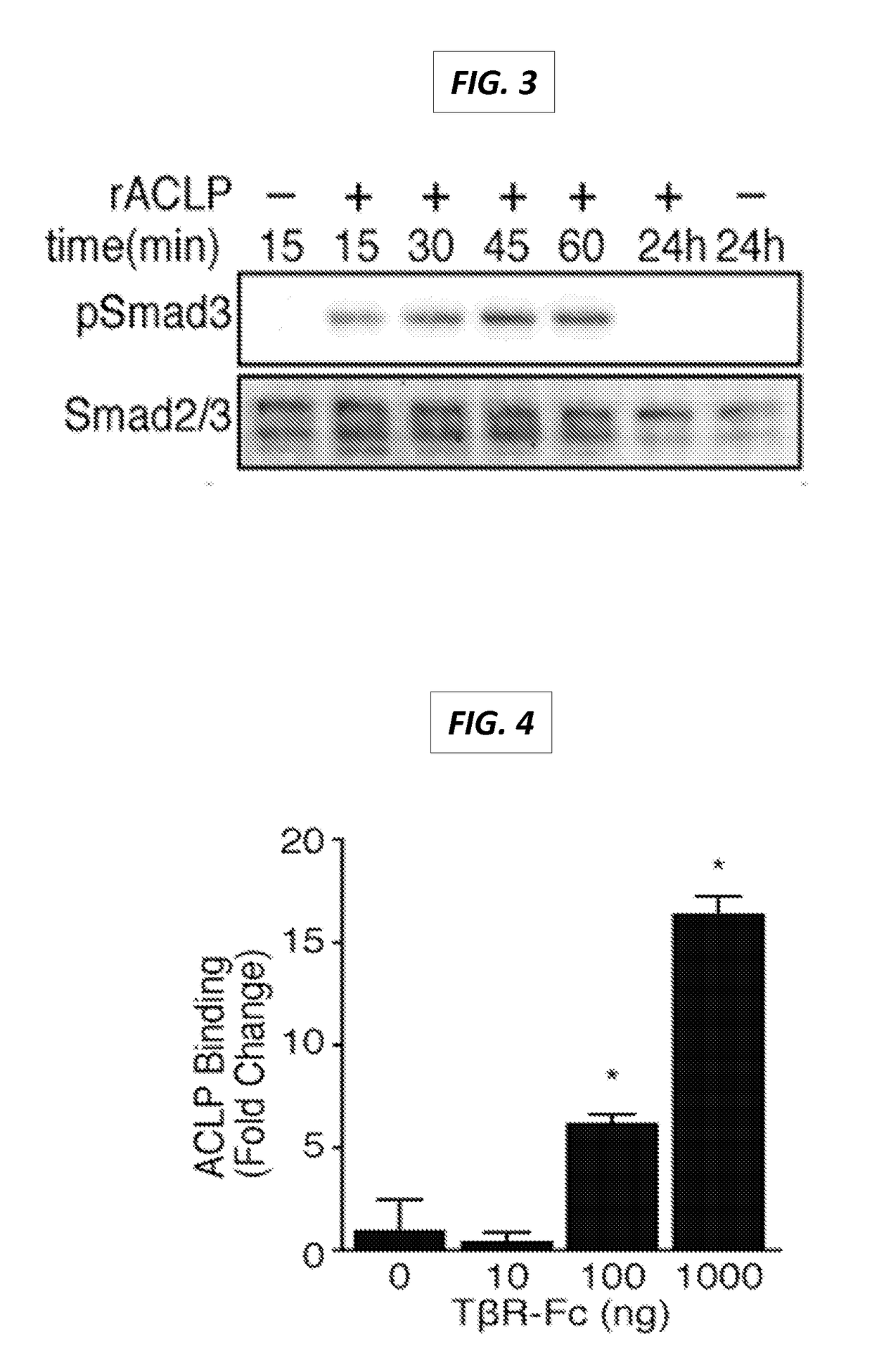Inhibitors of fibroproliferative disorders and cancer
a cancer and fibroproliferative disease technology, applied in the field of inhibitors of fibroproliferative diseases and disorders, can solve the problems of incomplete understanding of the molecules, lack of effective ssc therapies, and genetic instability of transformed epithelial cells, and achieve the effects of preventing tgf, reducing the pro-fibrotic domain (pfd) function, and reducing the non-specific side effects or impact on normal tissues
- Summary
- Abstract
- Description
- Claims
- Application Information
AI Technical Summary
Benefits of technology
Problems solved by technology
Method used
Image
Examples
example 1
[0558]Generation of Recombinant ACLP
[0559]In order to elucidate the role of ACLP in the fibroblast to myofibroblast transition, recombinant ACLP was expressed and purified from mammalian cells for use in gain of function studies in fibroblasts (FIG. 1) (3). Purification was achieved by binding the protein to an immobilized metal affinity chromatography column (Bio-Rad Duo Flow) via a C-terminal His tag (FIG. 1A). The column was washed exhaustively, including a sodium carbonate buffer (pH 11) wash as described (1) to remove trace amounts of TGFβ (FIG. 1C), protein was eluted off the column with 250 mM imidazole (FIG. 1B), dialyzed into 1× PBS with Ca2+ and Mg2+, and concentrated. Protein purity was determined by SDS-PAGE and Coomassie staining (FIG. 1D).
[0560]Recombinant ACLP induces myofibroblast gene and protein expression. To further define the role of ACLP in the fibroblast to myofibroblast differentiation process, IMR90 human lung fibroblast cells were treated with rACLP. IMR90 ...
example 2
[0563]ACLP binds to the TGFβ-receptor II. Because ACLP stimulated TGFβ signaling but did not appear to directly interact with TGFβ in the inventors cell-free binding assay or activate latent TGFβ (data not shown), the inventors then assessed if ACLP interacts directly with TβRII (see FIG. 10). rACLP was biotinylated, immobilized on a streptavidin-coated plate, incubated with increasing amounts of TβRII Fc chimera (R&D), and binding was detected with human IgG-HRP (FIG. 4) (3). The TβRII Fc chimera contains the extracellular domain of mouse TβRII fused to the Fc domain of human IgG and has been used as a global inhibitor of TGFβ (6). In these assays, the TβRII Fc did not bind to streptavidin wells without ACLP. Compared to control-coated wells, wells with immobilized rACLP exhibited significantly more binding to the TβRII Fc chimera (p<0.05). These results indicate that ACLP binds to TβRII independent of the presence of TGFβ.
example 3
[0564]MAPPING THE FUNCTIONAL DOMAINS OF ACLP. The N-terminal domain of ACLP stimulates TGFβ signaling. ACLP is made up of an N-terminal Tsp repeat domain which is lysine, proline (i.e., the pro-fibrotic domain or PFD), and glutamic acid-rich, a discoidin domain (DS), and a catalytically inactive carboxypeptidase domain (7,8) (FIG. 1A). Because the invetors have previously reported that ACLP promotes the fibroblast to myofibroblast transition by binding to TβRII to promote Smad3 phosphorylation and nuclear translocation and subsequent SMA and collagen protein expression, the inventors herein assessede which domains of ACLP were responsible. The inventors purified recombinant mouse ACLP (mACLP) protein containing the N-terminal Tsp repeat domain (amino acids 26-373 of mouse ACLP) or the C-terminal discoidin (DS) domain and carboxypeptidase domain (amino acids 374-1128 of mouse ACLP) (FIG. 5A). TGFβ responsive MLEC cells were treated overnight in low serum media containing increasing a...
PUM
| Property | Measurement | Unit |
|---|---|---|
| Fraction | aaaaa | aaaaa |
Abstract
Description
Claims
Application Information
 Login to View More
Login to View More - R&D
- Intellectual Property
- Life Sciences
- Materials
- Tech Scout
- Unparalleled Data Quality
- Higher Quality Content
- 60% Fewer Hallucinations
Browse by: Latest US Patents, China's latest patents, Technical Efficacy Thesaurus, Application Domain, Technology Topic, Popular Technical Reports.
© 2025 PatSnap. All rights reserved.Legal|Privacy policy|Modern Slavery Act Transparency Statement|Sitemap|About US| Contact US: help@patsnap.com



